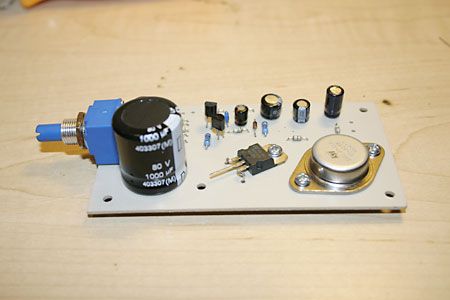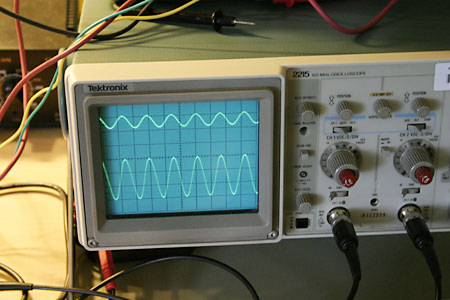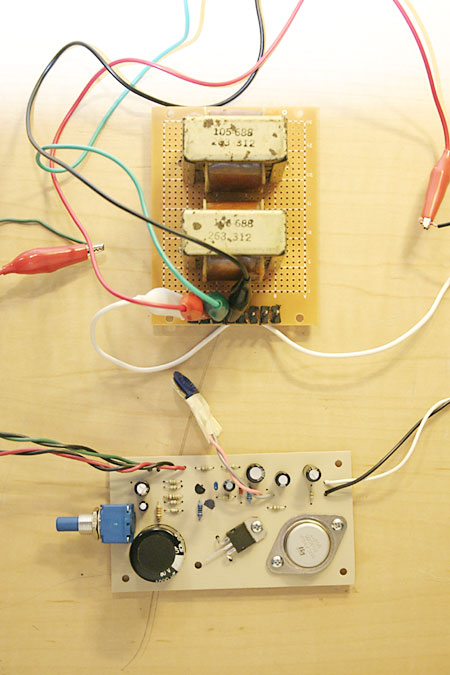Home > Studio Recording DIY Projects>PM1001 Mic Preamp
That means, I can make 8 preamps out of these. :)
Update:
I started stuffing components in the board.... and see that I still have a lot of work that needs to be done. The PCB layout needs some minor revisions.
- First of all, I ordered the wrong part for the PNP Power Transistor. It needs to be a TO-3, and I got a TO-220 package. You can see on the pic the funny looking black transistor, beside the silver can TO-3.
- Second, while a heatsink isn't needed, I like it for that "serious power" look. But there was not enough clearances for the TO-3 heatsink.
- Third, the big power capacitor is too near the Bournes sealed plastic potentiometer. I need some clearance there too.
- Fourth, the holes for the trimmer resistors are so out of whack, I just used wires to connect them.

Problems!!!
I connected a signal generator at the inputs and a small amplified speaker at the outputs. After I power up, instead of amplifying the signal, it was reducing it. WHAAA?? I re-checked the orientation of the (2) TO-92 transistors and they were wrong. Desoldered them, and reoriented them correctly... still no go. Maybe I damaged them the first time?
So out they go, and in came 2 brand new transistors.... same problems. Checked the PCB, and found some solder shorts... fixed that and tested it, and still no go.
I rechecked my PCB design with the schematic and the schematic with the original design.... nothing wrong...
At this point, I'm thinking of chucking the whole thing in the trash, and salvaging the parts.... but I decided to replace the 2 transistors with some generic ones from my parts box. Power up... and LOUD SOUND came from the speaker! It's working and amplifying the signal.... I checked with an oscilloscope to confirm what I'm hearing....

Success!!!
I then added an output transformer and power up again.... great sound filled the room! There was lots of headroom, of course, the unit being powered by 40 Volts! To my ears, there is a slight scoop in the mids which make for a very nice sounding, musical sound. The bass and low frequencies sound tremendous and deep and seem to be reproduced without any effort! My sub is getting a workout!
This is the nice thing about discrete audio circuits, it doesn't sound "cold" like an IC chip... it sounds sweet and musical... sorry, it's hard to describe sound with words.

On the pic, you can see the trimmer resistor (used to adjust bias for Class A operation) hookedup with wires. I used all Panasonic FC capcitors and metal film 1% resistors.
I think this board will look better if I have 2 power transistors instead of just one (like the picture above) and have no trimmer resistors hanging on wires :)
But hey, it's my first prototype, so gimme a break. :) The important thing is it works.
